The Moon Village: Humanity’s First Tourist Town in Space
Introduction
For centuries, humanity has looked to the Moon as a symbol of mystery and wonder. Now, through moon village tourism, it’s becoming the next frontier of human civilization. The European Space Agency (ESA) envisions a sustainable lunar settlement — the Moon Village — that combines scientific innovation with cultural, economic, and tourism potential.
Soon, tourists may not only gaze at the Moon but live, learn, and explore there.

2. Building a Sustainable Life System on the Moon
For moon village tourism to thrive, the Moon needs its own life-support systems. ESA’s research focuses on three core pillars:
- Recycled resources: Closed-loop systems will reuse air, water, and waste.
- 3D printing with lunar soil (regolith): To build habitats without transporting materials from Earth.
- Renewable energy: Solar farms will power life modules and tourism facilities.
These innovations will not only sustain astronauts but also enable eco-luxury tourism. Imagine staying in a solar-powered glass dome, watching Earthrise through your bedroom window.
Must Read: The sustainable design echoes innovations discussed in Lunar Glamping: Camping Under the Moon’s Surface Domes.
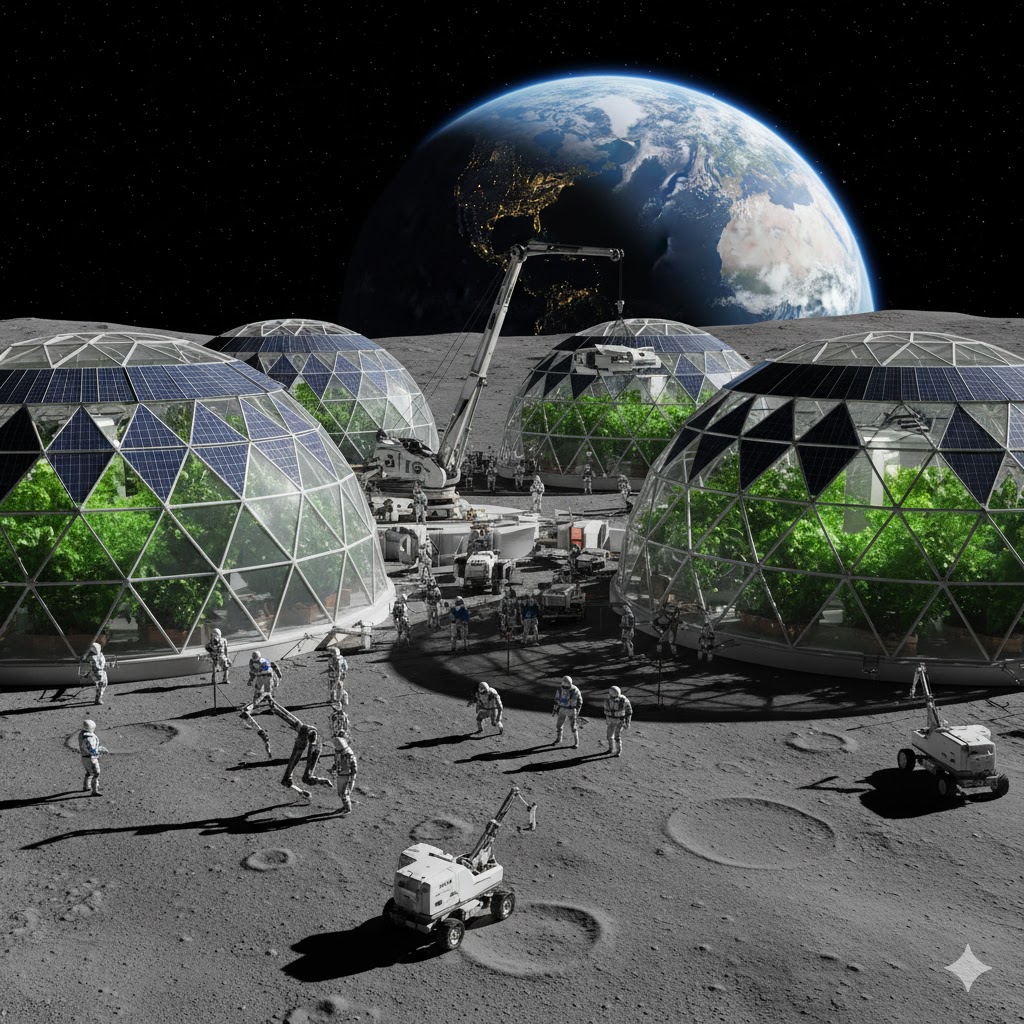
3. The Future Tourist Experience on the Moon
A visit to the Moon won’t just be science — it’ll be a complete cultural and luxury travel experience.
Visitors might:
- Take guided rover tours across the lunar surface.
- Dine in gravity-adjusted restaurants featuring hydroponic ingredients grown on-site.
- Visit museums dedicated to the history of lunar exploration.
- Participate in zero-gravity art and meditation workshops.
Source: For inspiration, see NASA’s Artemis program overview, which complements ESA’s lunar goals.

4. Cultural and Educational Potential
The Moon Village aims to become not just a base but a symbol of human unity and culture. ESA envisions art, music, and international collaboration as key aspects of its community.
Future tourists might attend Earth-Moon concerts, art galleries in low gravity, or even participate in lunar heritage projects preserving humanity’s space history.
Must Read: Similar to the storytelling approach in Interstellar Honeymoons: Love Stories Written Among the Stars, this vision turns science into shared culture.

5. Comparing Moon Village Tourism vs. Earth-Based Eco Cities
| Feature | Moon Village | Earth Eco Cities |
|---|---|---|
| Energy Source | Solar radiation | Solar/wind hybrid |
| Materials | Lunar regolith 3D printing | Recycled urban materials |
| Transportation | Electric rovers | Electric vehicles |
| Sustainability Level | Near-zero waste | Low emissions |
| Tourism Appeal | Extraterrestrial exploration | Environmental experience |
Both models share a common goal — sustainable living — but the Moon Village adds the thrill of space exploration.
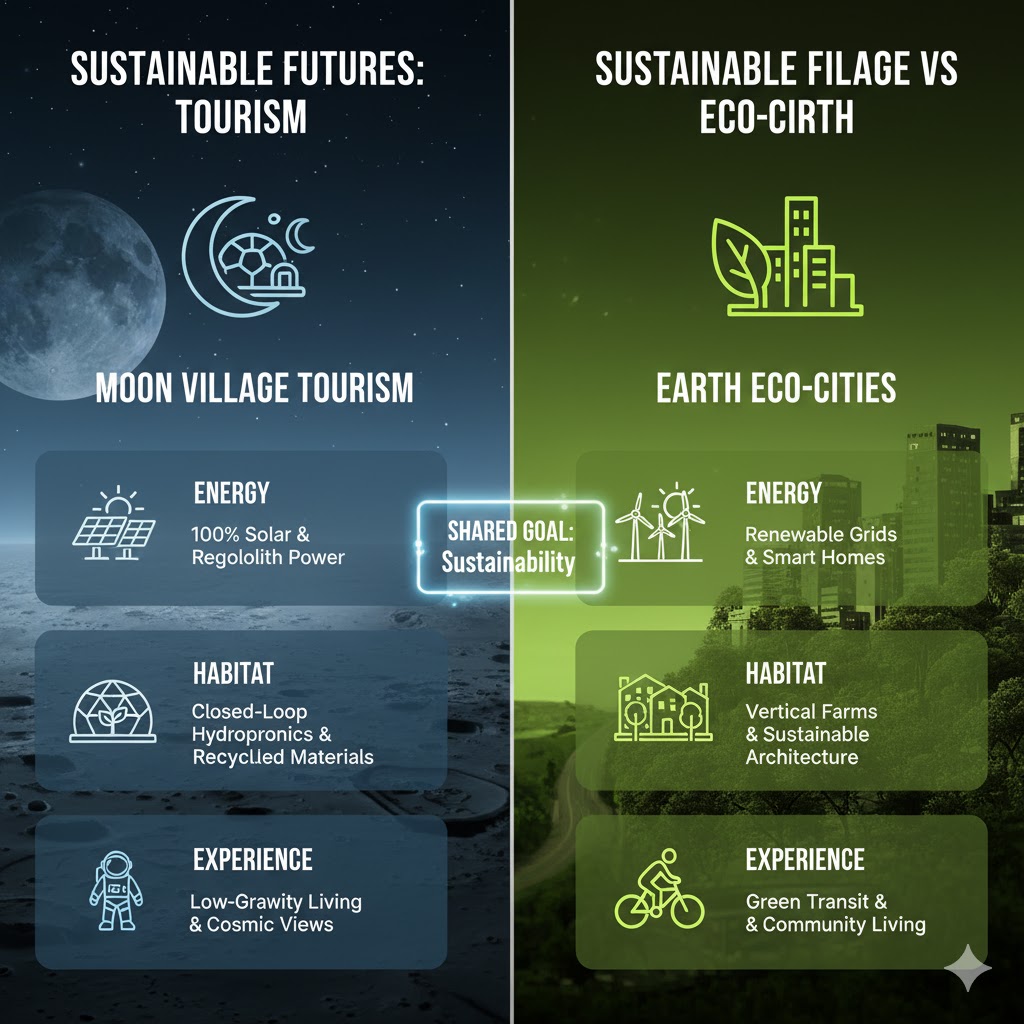
6. Economic and Social Impact of Moon Village Tourism
Moon Village tourism will create a multi-billion-dollar space economy.
Opportunities include:
- Space hospitality and logistics companies
- Virtual tourism experiences streamed from the Moon
- Education and research partnerships with universities worldwide
ESA estimates hundreds of high-tech jobs will emerge, from lunar architecture to cosmic culinary design.
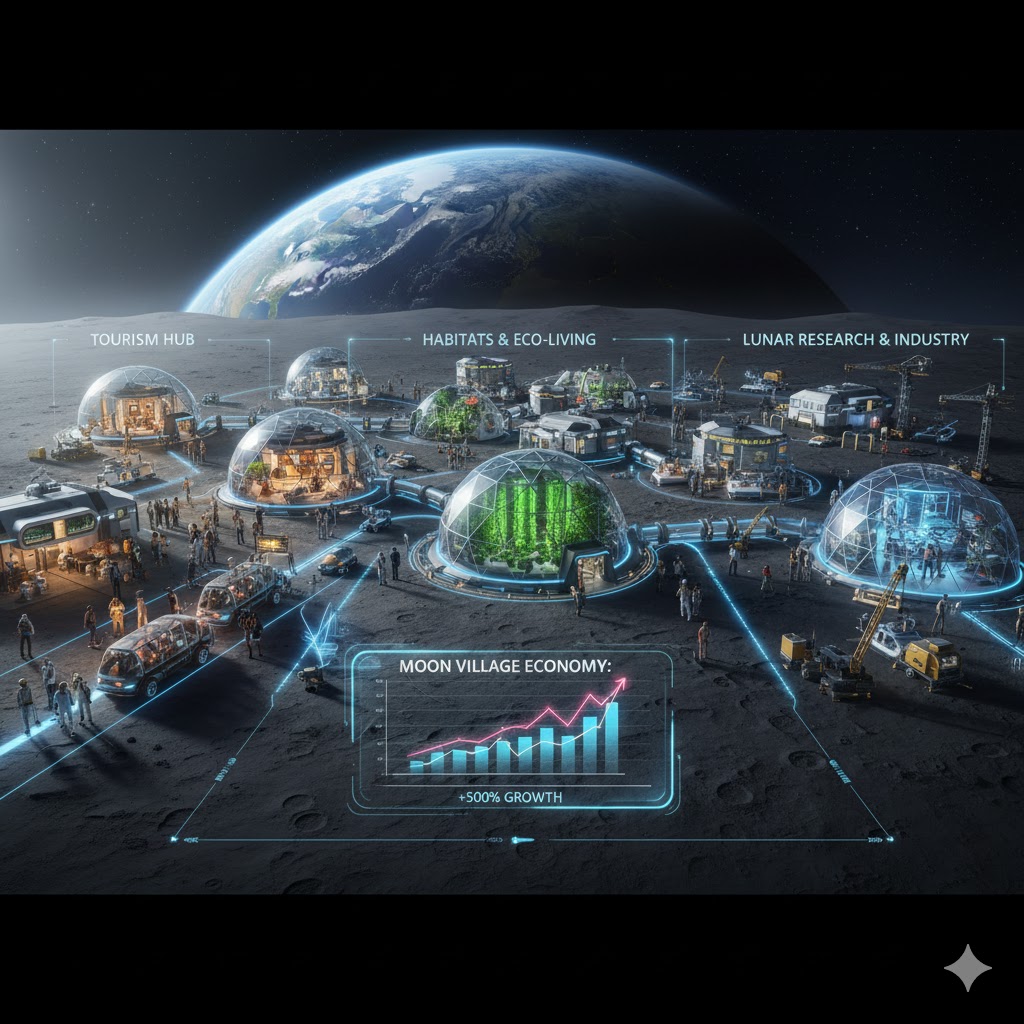
7. Challenges and Ethical Considerations
Despite its promise, moon village tourism faces challenges:
- High costs for transport and construction
- Radiation protection and medical infrastructure
- Ethical concerns about preserving the lunar environment
ESA’s policy emphasizes peaceful, cooperative exploration, ensuring tourism develops responsibly.
Traveler Review:
The Moon Village tourism movement marks the beginning of humanity’s next chapter — living, working, and creating beyond Earth.
By combining sustainable design, cultural exchange, and visionary leadership, the ESA’s Moon Village could soon become humanity’s first tourist town in space — a shining example of how exploration can coexist with care.
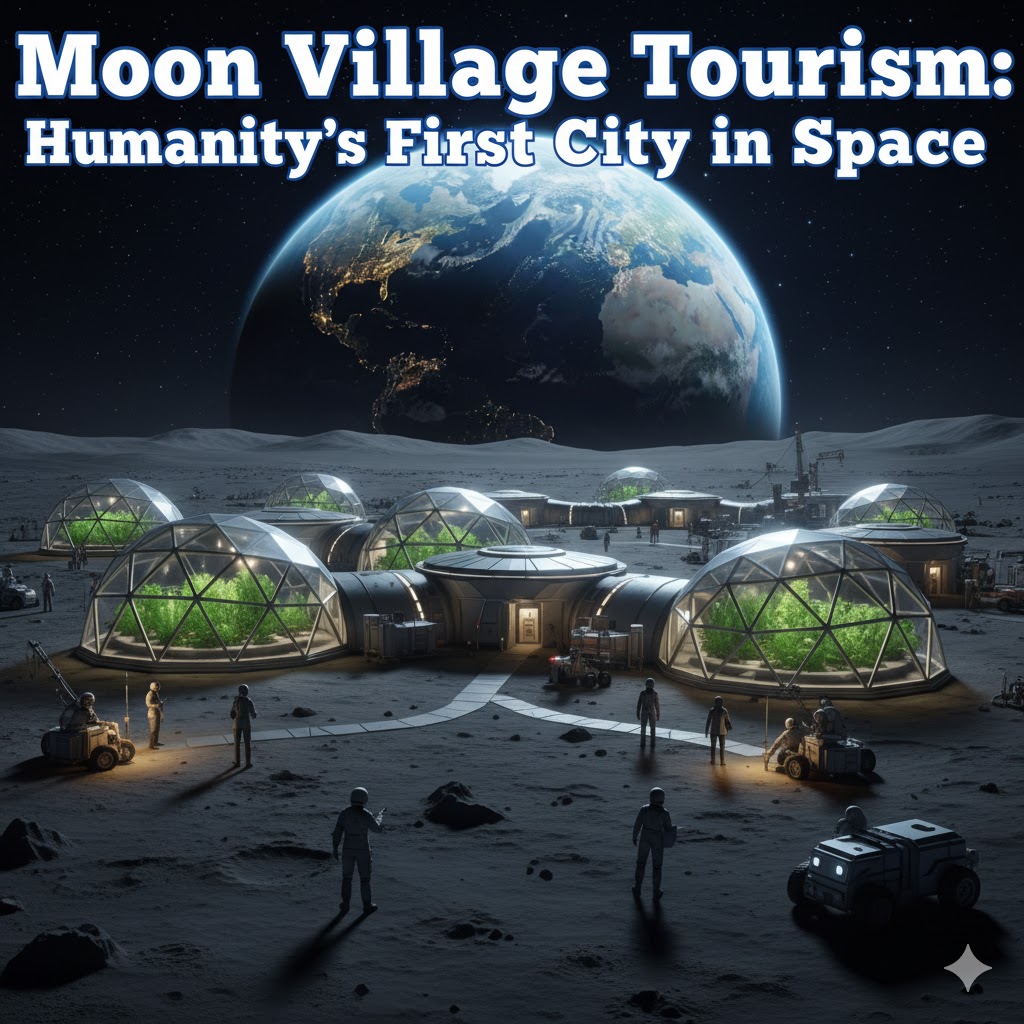
FAQs
Q1: What is the Moon Village project?
It’s ESA’s plan for a permanent, sustainable lunar settlement serving as a hub for science, culture, and tourism.
Q2: When will Moon Village tourism start?
Early infrastructure could begin by 2028, with limited tourism possible by the early 2030s.
Q3: Who can visit the Moon Village?
Initially, trained space tourists, researchers, and cultural ambassadors will participate.
Q4: How is it different from other space bases?
Unlike temporary missions, the Moon Village is designed for long-term living, culture, and public access.
Q5: Will Moon Village tourism be sustainable?
Yes — ESA’s focus is on closed-loop systems, renewable energy, and minimal resource waste.

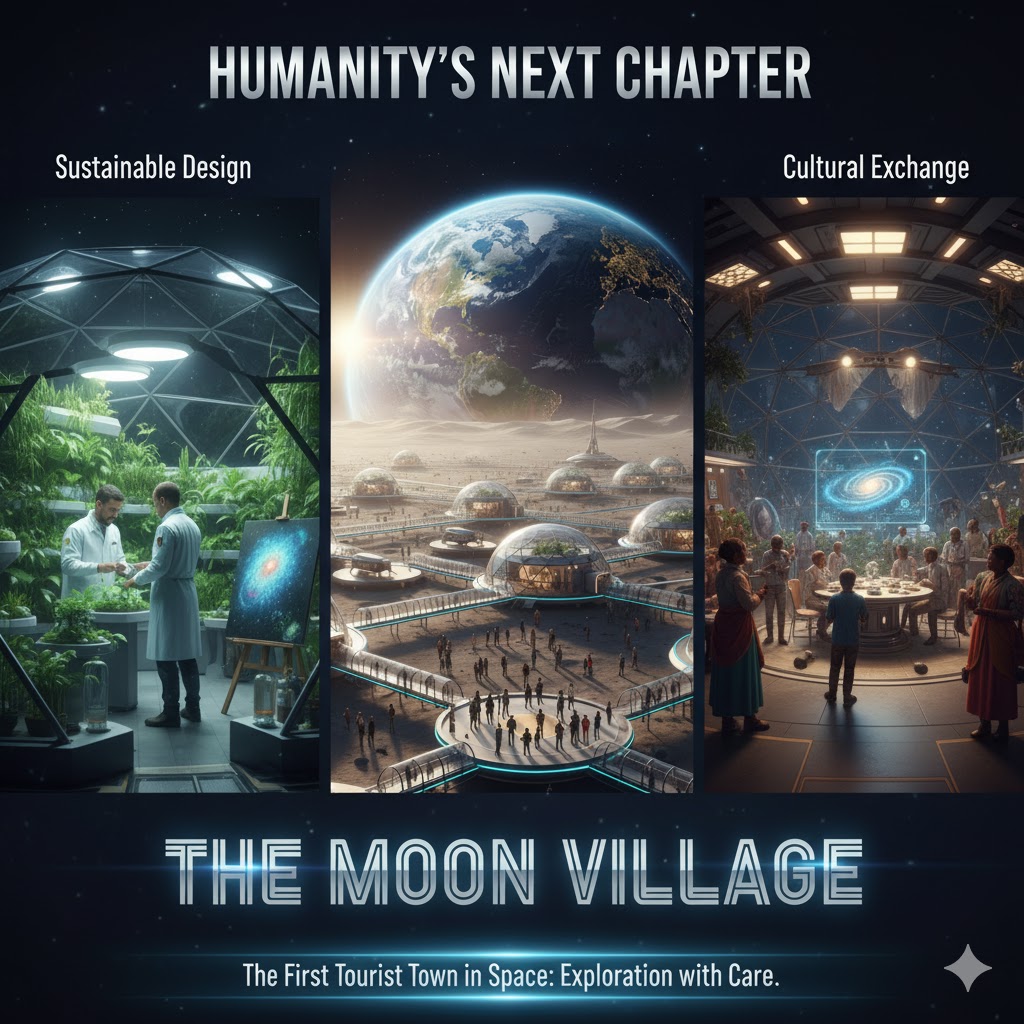


Pingback: Asteroid Tourism: The Ultimate Space Adventure Trips of the 2030s
Pingback: Lunar Winery Tourism: 8 Ultimate Space Luxury Tasting Experience
Pingback: 25 Untouched Destinations to Explore Best in 2026 (Polar to Pacific)